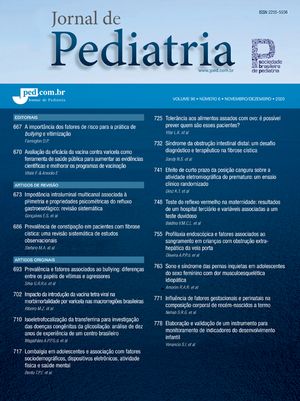
To describe the epidemiology, clinical features and treatment of dengue fever and dengue shock syndrome.
SourcesTo prepare this review, a literature search was made on Pubmed and on the World Health Organization (WHO) and PAHO websites using the terms dengue and dengue shock syndrome. This information was complemented with personal practice.
Summary of the findingsDengue is the most important arthropod-borne viral disease of humans. Its presentation is protean and varies from an undifferentiated viral syndrome to hemorrhagic fever and severe shock. Dengue fever is a self-limiting, nonspecific illness characterized by fever, headache, myalgia, and constitutional symptoms. Its severe forms (hemorrhagic fever and shock syndrome) may lead to multisystem involvement and death. Early diagnosis, close monitoring for deterioration and response to treatment are necessary in all cases. WHO has provided a stepwise approach to management that is useful for milder forms and early shock. In the more severe forms aggressive fluid resuscitation and support for failing organs is necessary for the critically ill patient. Research addressing pathophysiological differences between dengue shock and septic shock, choice of fluids, inotropes and techniques of organ support are likely to yield benefits for the critically ill.
ConclusionsThere is no specific therapy for dengue infections. Good supportive care may be lifesaving, but ultimately initiatives aimed at vector control and prevention of mosquito bites may provide the greatest benefits.
Descrever a epidemiologia, as características clínicas e o tratamento do dengue e das síndromes do choque associadas ao dengue.
Fontes dos dadosPara esta revisão de literatura, foi feita uma pesquisa no Pubmed e nos websites da Organização Mundial da Saúde (OMS) e OPAS usando os termos dengue e síndrome do choque associada ao dengue. A informação foi complementada com a experiência pessoal dos autores.
Síntese dos dadosO dengue é a mais importante doença viral transmitida por artrópodos em seres humanos. A doença se manifesta de diversas formas, variando desde uma síndrome viral não-diferenciada até febre hemorrágica e choque grave. O dengue é uma enfermidade autolimitada, não específica, caracterizada por febre, cefaléia, mialgia, e sintomas constitucionais. As formas mais graves (febre hemorrágica e síndrome do choque) podem levar a um comprometimento multissistêmico e ao óbito. O diagnóstico precoce e um acompanhamento contínuo do agravamento e da resposta ao tratamento são necessários em todos os casos. A OMS recomenda uma abordagem escalonada para o manejo, adequada para as formas mais leves e para o choque precoce. Nas formas mais graves, é preciso uma abordagem agressiva de reanimação com fluidos e de suporte à falência de órgãos em pacientes em estado crítico. As pesquisas sobre as diferenças fisiopatológicas entre o choque do dengue e o choque séptico, seleção de fluidos, agentes inotrópicos e técnicas de suporte a órgãos podem beneficiar os pacientes em estado crítico.
ConclusõesNão há uma terapia específica para infecções causadas pelo dengue. Um bom tratamento de suporte pode salvar vidas mas, em última análise, as iniciativas de controle do vetor e de prevenção contra picadas do mosquito podem trazer os maiores benefícios.








